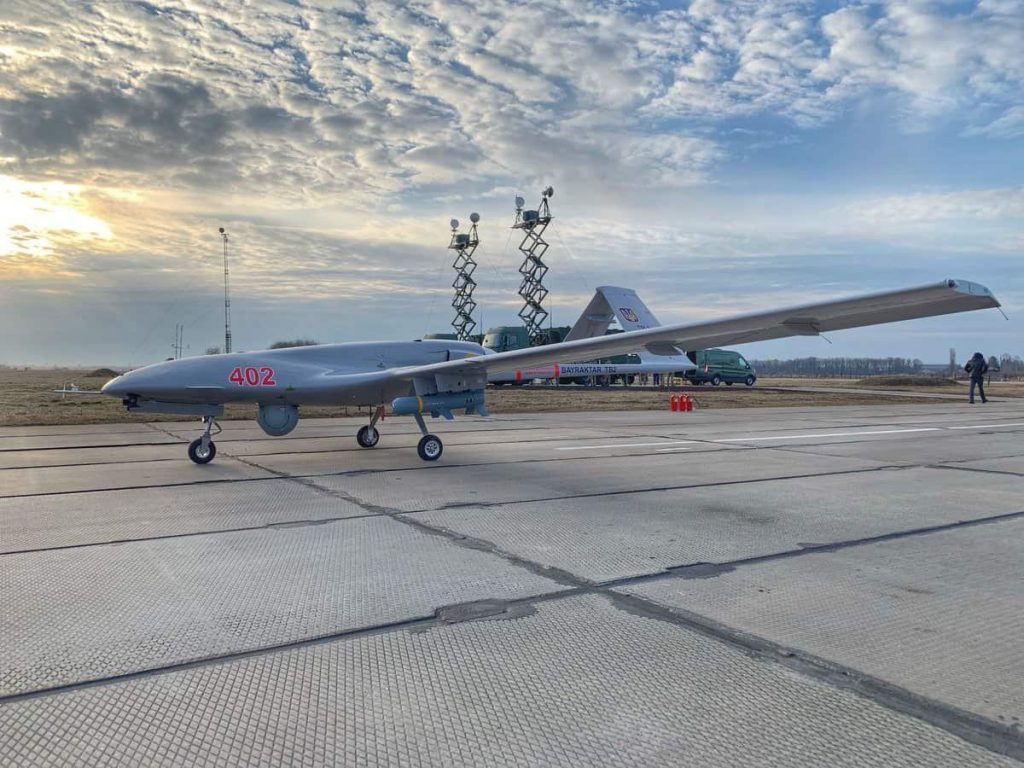The value of Turkey’s defence and aviation sector continues to rise as international demand for Turkish-made armed drones continues to grow.
Mustafa Varank, Turkey’s Minister of Industry and Technology, told CNN Turk that Turkey’s defence and aviation revenue had grown to $12 billion annually.
The Minister highlighted the growth in exports too, stating that in 2005 international sales stood at $340 million, compared to 2020 when they generated $3 billion.
One of Turkey’s big innovations is in unmanned aerial vehicles (UAVs), or drones. Manufactured by Bayraktar and Anka, these armed drones have been successfully deployed in a number of conflicts already, including in Libya, Syria and in Azerbaijan’s Nagorno-Karabakh region.
Turkish drones were credited for playing a pivotal role in helping Azerbaijan win last year’s 44-day war against Armenia, that led to the liberation of its Karabakh region after 30 years of occupation.
Ukraine is another state to have invested in Turkish-made drones in its bid to bolster its defence against Russian aggression, and earlier this year NATO partner Poland also placed an order for Turkish drones.
The Poles will take receipt of 24 TB2s armed with anti-tank missiles. Polish Defence Minister Mariusz Blaszczak said that the drones “have proven themselves in war.”
UK Defence Secretary Ben Wallace calls Turkish drones a “game-changer”
Latvia, Serbia and Albania are among European countries who have expressed an interest in the UAVs. During his CNN Turk interview, Varank said that Britain was also considering investing in the drones:
British Defence Secretary Ben Wallace heaped praise on Turkish UAVs during a speech he gave last year, describing them as a “game-changer”.
“We need to look at the lessons of others. Look how Turkey has been operating in Libya where it has used Bayraktar TB-2 UAVs since mid-2019.
“Those UAVs have conducted intelligence, surveillance and reconnaissance and targeting operations against frontlines, supply lines and logistics bases.
“In July last year they struck the Libyan National Army controlled Jufrah airfield destroying several command and control nodes as well as two transport aircraft
“Or consider Turkey’s involvement in Syria and its use of Electronic Warfare (EW), lightly-armed drones and smart ammunition to stop tanks, armoured cars and air defence systems in their tracks.
“According to reports Assad regime suffered heavy losses ‘3000 soldiers, 151 tanks, eight helicopters, three drones, three fighter jets vehicles and trucks, eight aerial defence systems and one headquarters among other military equipment and facilities.’
“Even if only half of these claims are true the implications are game changing,” said Minister Wallace at the Air and Space Power Conference on 15 July 2020.
The United States dominates the defence sector, cornering 37% of the market, followed by Russia with 20% and France with 8.2%. Turkey currently has less than 1% of the market, but it is enough to propel it into the top 15 countries that are leading exporters of major weapons.
President Recep Tayyip Erdoğan sees the UAVs as part of a strategy to make Turkey militarily more self-sufficient.
Main image, top, of a Bayraktar TB2, Sept. 2020, photo © Ministry of Defence Ukraine /Wikimedia Commons, CC by SA 4.0





